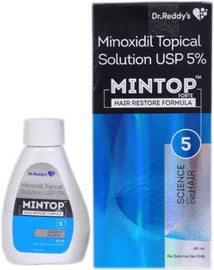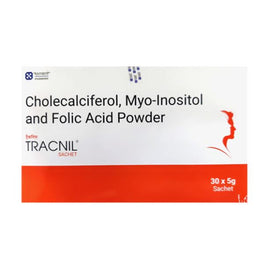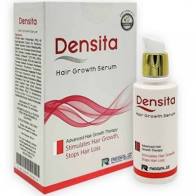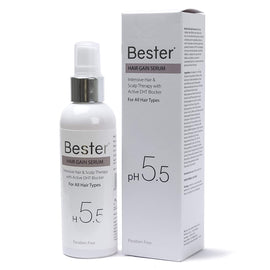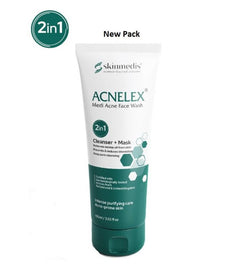Alopecia means loss of hair. Alopecia areata is a type of localized hair loss which is typically seen as bald patches. It may affect any area of the body that has a reasonable amount of hair. It affects males and females equally.
In the majority of cases hair regrows after several months. It does not affect the overall health of the person.
Your shopping bag is empty
Go to the shop
Alopecia areata is an autoimmune condition. It is generally seen as a sudden loss of patch of hair, sometimes noticed overnight, or within a day or two. It can happen on the scalp, beard area or sometimes on the body as well.
We at MySkinCare.in would like to point out here that these patches are just a symptom, and the real reason behind your Alopecia areata may be 4 important factors which include, family history of high blood pressure or person himself having high blood pressure, there may be history of allergies and high IgE levels, or history of asthma/allergies cause alopecia. Some people also get alopecia due to underlying hormonal problems and stress issues.
While there are some wonderful options for managing alopecia, always remember to look for the underlying causes, and see a dermatologist. If you don’t want to consult a dermatologist in person for any reason, you can feel free to connect with our team of doctors to help you out before you choose a product for yourself.

Frequently Asked Questions
Alopecia areata is believed to be an autoimmune disease. This condition occurs when the body’s own immune system damages its healthy cells. In Alopecia areata, our WBC’s gather around the affected hair follicles. This causes inflammation which leads to hair loss. Genetics, atopy and environmental factors play a role. It is not a hereditary condition.
It typically shows up in the form of one or more bald patches on the scalp. It may affect any hairy region of the body. Hair loss may be seen on the scalp, beard, moustache, eyebrows, eyelashes or body hair may also be lost. Scalp is the most commonly affected site in 90% of the cases. Apart from the visible bald patches, the scalp usually appears healthy and there is no scarring.
The bald patches are round in shape and they are usually about the size of a coin. The nails may be affected in about 1 in 10 cases of Alopecia areata; there may be pitting or ridging on the nails.
It is difficult to predict the progress of a bald patch in cases of Alopecia areata.
Usually the hair regrows within a few months. Initially it is grey or white in colour and the normal colour returns after several months.
At times, one or more bald patches can develop within a few weeks after the first one. Large bald patches can also develop.
Patches of body hair, beard, eyelashes and even eyebrows may be affected in some cases. Sometimes, the entire scalp hair is lost. This is called Alopecia totalis. In a small number of cases, the entire scalp hair, body hair, beard, eyebrows and eyelashes can be lost. This is called Alopecia universalis.
Consult a dermatologist since it can be easily diagnosed by the dermatologist by the clinical appearance of the lesion.
Appropriate counselling, topical therapy and medications will be recommended by the dermatologist as per the needs.
Usually no tests are required. The diagnosis is usually confirmed by clinical examination and it is based on the typical appearance of the bald patches. A dermatoscopy may aid the clinical diagnosis.
Blood tests may be advised to check for other auto-immune diseases and a skin scraping or biopsy may be done to rule out other causes of hair loss.
Alopecia areata is a very unpredictable condition. In many cases, bald patches tend to re-grow by themselves, without treatment. If the hair loss becomes more extensive then the decision on whether to treat or not may be considered.
Steroid injections
Injections of steroid (Triamcinolonacetonide) into the bald patches of the scalp suppress the local immune reaction that occurs in Alopecia areata and allows the regrowth of hair. This treatment may be an option for some small to medium sized bald patches.
This treatment should only be done by a skin specialist.
Larger sized bald areas are not suitable for such steroid injections.
Injections are repeated every 4-6 weeks.
It takes 1-2 months for the hair to regrowth to begin.
There is no guarantee that any hair re-grown during treatment will continue to exist.
Topical steroids and immunomodulators
Steroid cream, gel, etc., can be used but these are not as effective as steroid injections. Topical steroids are to be strictly used under medical supervision and prolonged use should be avoided.
Topical corticosteroid sparing agents such as tacrolimus can be used in sites such as eyebrows.
Topical minoxidil solution
Applied to the bald patches and has been shown to promote hair re-growth in some cases.
Contact immunotherapy
Topical immunotherapy is the most effective option for people who have extensive alopecia areata.
Diphenylcyclopropenone (DPCP)
Substances like diphenylcyclopropenone (DPCP) are applied on the affected skin to make the skin react like an allergy or dermatitis (eczema). The skin reaction affects the process involved in causing alopecia areata to regrow hair.
Other treatments
Various other treatments include the following:
Phototherapy has been used with limited success with either a psoralen combined with ultraviolet A (PUVA) or narrow band UVB therapy.
Systemic steroids are used for rapidly progressive and extensive involvement as long term or short term treatment. Immunosuppressive drugs such as cyclosporine, azathioprine or methotrexate may be used.
Wigs are considered in resistant cases.
Tattooing can be considered in case of eyebrow hair loss for cosmetic reasons.
Bald patches are commonly localized to the scalp and can grow spontaneously or improve with treatment.
Progression to extensive involvement is common if:
- The bald patches start in childhood.
- If there is a history of atopic eczema (A type of skin allergy).
- If there is a family history of alopecia areata.
- The initial bout of hair loss affects more than half of scalp area.
- When eyelashes and/or eyebrows are involved.
- Hair loss is around the scalp margin.
- Nail changes are present.
- Underlying autoimmune disease like vitiligo, lichen planus, thyroid disorders or diabetes mellitus may be present.
Spontaneous regrowth is usually seen in 80% of cases, without treatment within a few months to a year.
However the course of disease is unpredictable and recurrence may occur in a few cases.
Alopecia areata is a cosmetic problem. The change in appearance may cause anxiety, depression or feelings of unattractiveness.
In children with Alopecia areata, change in child’s behaviour may be noted and the child may have low self-esteem and appear withdrawn.
Learn to develop positive feedback mechanisms and accept the change in appearance.
Consult a dermatologist for appropriate counseling and treatment. A consultation with a clinical or pediatric psychologist may be needed in severe cases.
MySkinCare Recommended Products
PROLOX-DS 10% Topical Solution
₹ 1,050
₹ 1,020
Prolox Extra Strength 10% Topical Solution belongs to a class of drugs known as vasodilators. It is used to promote...
VRH Haironomics Hair Growth Serum 120 ml
₹ 1,499
VRH hair growth serum stimulates dermal papilla cells in hair follicles A Increased Anagen hair follicles growth stays long for...
Prolox 5% Topical Solution
₹ 895
₹ 849
Prolox 5% Topical Solution belongs to a class of drugs known as vasodilators. It is used to promote hair growth...
Mintop Forte 5% Solution 60ml
₹ 1,192
₹ 1,169
Mintop Forte 5% Solution belongs to a class of drugs known as vasodilators. It is used to promote hair growth...
Tracnil Sachet Powder 30 X 5gm
₹ 1,350
₹ 1,275
Tracnil Sachet is a combination of Folic acid, Myo-inositol and Vitamin D3. It is an ideal supplement for women suffering...
Densita Hair Growth Serum 60ml
₹ 1,749
₹ 1,699
Product Attributes: Re-activates the hair growth cycle Increases hair follicle length, improves hair root anchoring Proven Clinical results in less...
Hairbless 2x15 Tablets
₹ 730
₹ 710
Hairbless Tablet works well by promoting hair growth at cellular levels and works within the scalp and increases the hair growth....
Aqua-Folli Scalp Serum
₹ 1,560
Hair loss is characterized by a reduced number of Aqua Fooli hair combined with an increased number of Telogen (degenerating)...
Aveil Hair Regrowth Minoveil 5%
₹ 796
₹ 779
Minoxidil is the only over- the-counter active ingredient clinically proven to help stop and even reverse hereditary hair loss, by...
Adonis Biodens Pro Hair Lotion
₹ 1,093
₹ 1,039
Biodens Pro Hair Lotion is a medicine used in the treatment of male pattern baldness. It is most effective in...
VRH Haironomics Hair Growth Serum 60ml
₹ 1,090
VRH hair growth serum stimulates dermal papilla cells in hair follicles A Increased Anagen hair follicles growth stays long for...
Adroit Racine Hair Lotion 60ml
₹ 1,480
Males are the key victims of baldness. Hair on back of the scalp fight longer unlike those in front and...
Bester Hair Gain Serum
₹ 595
₹ 550
Time tested remedy for controlling thinning of hair.With bester Hair Gain Serum thinning hairline issues are not a problem anymore....
Aquaroot Scalp Serum
₹ 1,598
Hair loss is characterized by a reduced number of Aquaroot(growing) hair combined with an increased number of Telogen (degenerating) ones....
Minopep Eva
₹ 990
₹ 949
Minopep Eva Topical Solution belongs to a class of drugs known as vasodilators. It is used to promote hair growth...
Mintop Forte 2% Solution 120ml
₹ 772
₹ 770
Mintop Forte 2% Solution is a medication containing the active ingredient Minoxidil. It is commonly used to treat hair loss,...




